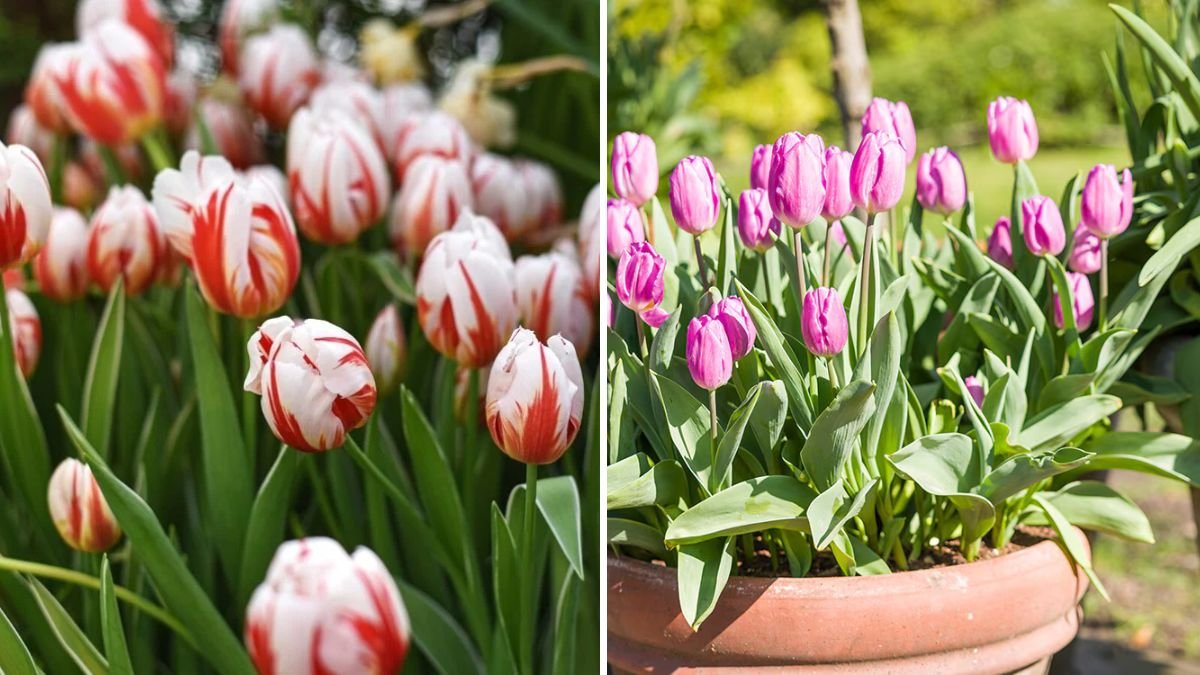Tulips are among the most iconic and beloved spring flowers, celebrated for their vivid colors, elegant shapes, and early-season charm. Their vibrant blooms are a hallmark of gardens worldwide, symbolizing renewal, beauty, and the joys of spring. However, gardeners often face a common challenge: tulips that bloom beautifully one year but fail to return the next. Maintaining tulip blooms year after year requires understanding their growth cycle, proper planting, soil care, pest and disease management, and post-bloom practices.
This guide provides comprehensive steps, tips, and expert advice to ensure tulips remain a recurring delight in your garden for years.
Step 1: Choosing the Right Tulip Varieties
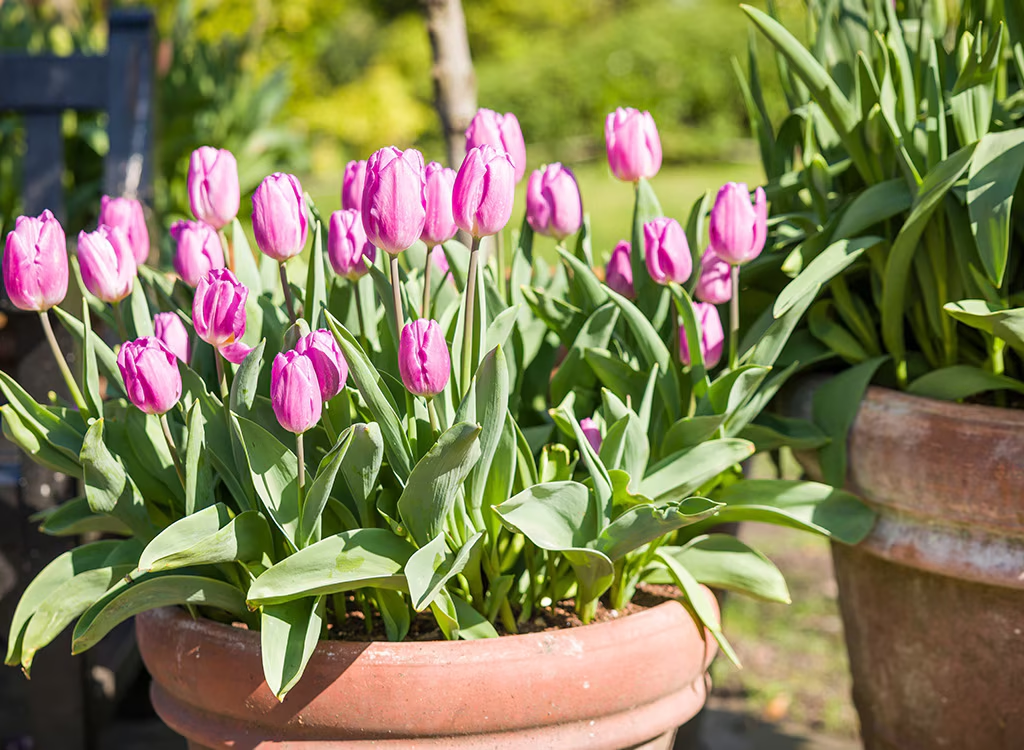
Not all tulips are equally perennial. Some hybrid varieties are designed for single-season blooms, while others are more capable of returning year after year:
- Species Tulips (Botanical Tulips):
- Small, naturalized tulips with a high rate of reblooming.
- Examples: Tulipa kaufmanniana, Tulipa clusiana.
- Ideal for perennial gardens and naturalizing in lawns or rock gardens.
- Darwin Hybrids:
- Large, long-stemmed tulips with strong foliage.
- Known for vigorous growth and often rebloom when well-cared for.
- Fosteriana and Triumph Tulips:
- Medium-height tulips that can return with proper care.
Tip: Focus on species and heirloom varieties rather than short-lived hybrids if your goal is consistent annual rebloom.
Step 2: Selecting the Ideal Planting Site
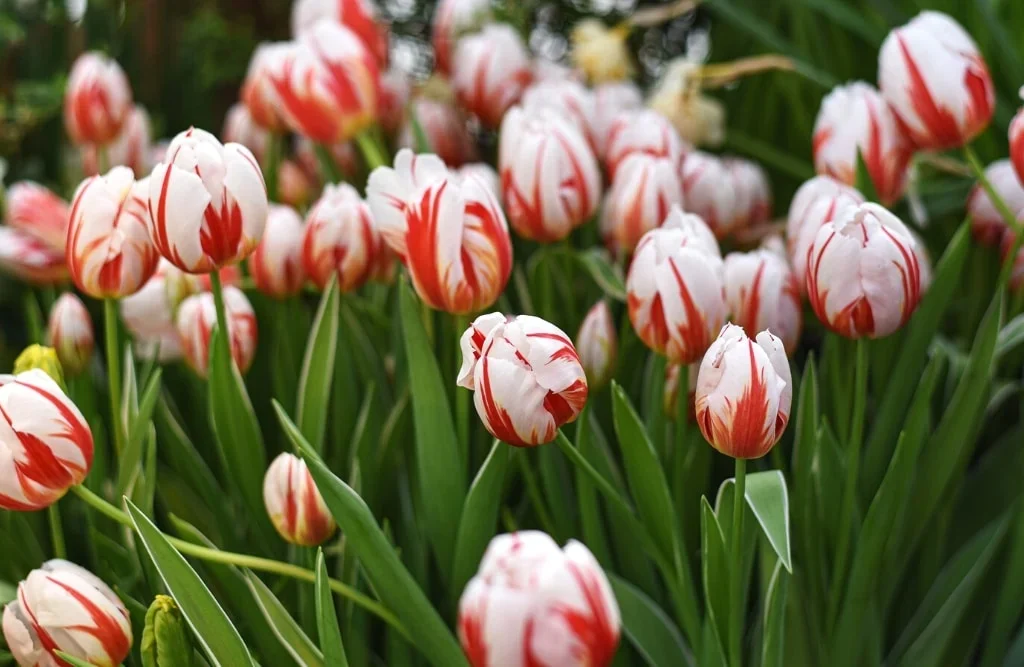
Tulips require specific conditions to thrive and rebloom:
- Sunlight: Full sun (6–8 hours) is essential for flower production and strong foliage.
- Soil Type: Well-draining soil is critical; tulips rot easily in waterlogged soil. Sandy or loamy soil is ideal.
- Protection: Avoid areas with heavy foot traffic or strong, constant winds.
- Companion Plants: Plant tulips among perennials that leaf later in the season to allow tulip foliage to die back naturally.
A carefully chosen site maximizes energy storage in bulbs, which is crucial for next year’s blooms.
Step 3: Planting Tulip Bulbs Properly
Correct planting is vital for perennial success:
- Timing: Plant bulbs in autumn, 6–8 weeks before the first frost. This allows roots to develop before winter.
- Depth: Plant bulbs 6–8 inches deep, roughly three times the bulb’s height.
- Spacing: Place bulbs 4–6 inches apart to allow airflow and reduce disease risk.
- Orientation: Point the pointed tip upward for optimal shoot emergence.
- Soil Amendment: Mix compost or bulb fertilizer into soil to provide nutrients for root development.
Proper planting ensures healthy root systems and sufficient energy storage for next spring.
Step 4: Watering and Fertilization
Tulips need specific moisture and nutrition routines:
- Watering:
- Water after planting to settle soil.
- Once established, tulips are drought-tolerant; avoid overwatering, especially in winter.
- Fertilization:
- Apply a low-nitrogen, high-phosphorus fertilizer at planting to encourage root development.
- Fertilize again in early spring as shoots emerge to support strong blooms.
Proper watering and fertilization boost bulb health and energy for future flowering.
Step 5: Supporting Healthy Foliage Growth

Tulip foliage is critical for storing energy in bulbs:
- Leave Foliage Intact: Allow leaves to yellow and die naturally after flowering. This process feeds the bulb for next year.
- Avoid Cutting Early: Do not cut or tie leaves while green; premature removal reduces energy storage.
- Pest Protection: Watch for slugs, snails, or aphids; use natural deterrents if needed.
Healthy foliage ensures bulbs accumulate sufficient nutrients for repeated blooms.
Step 6: Deadheading Tulip Flowers
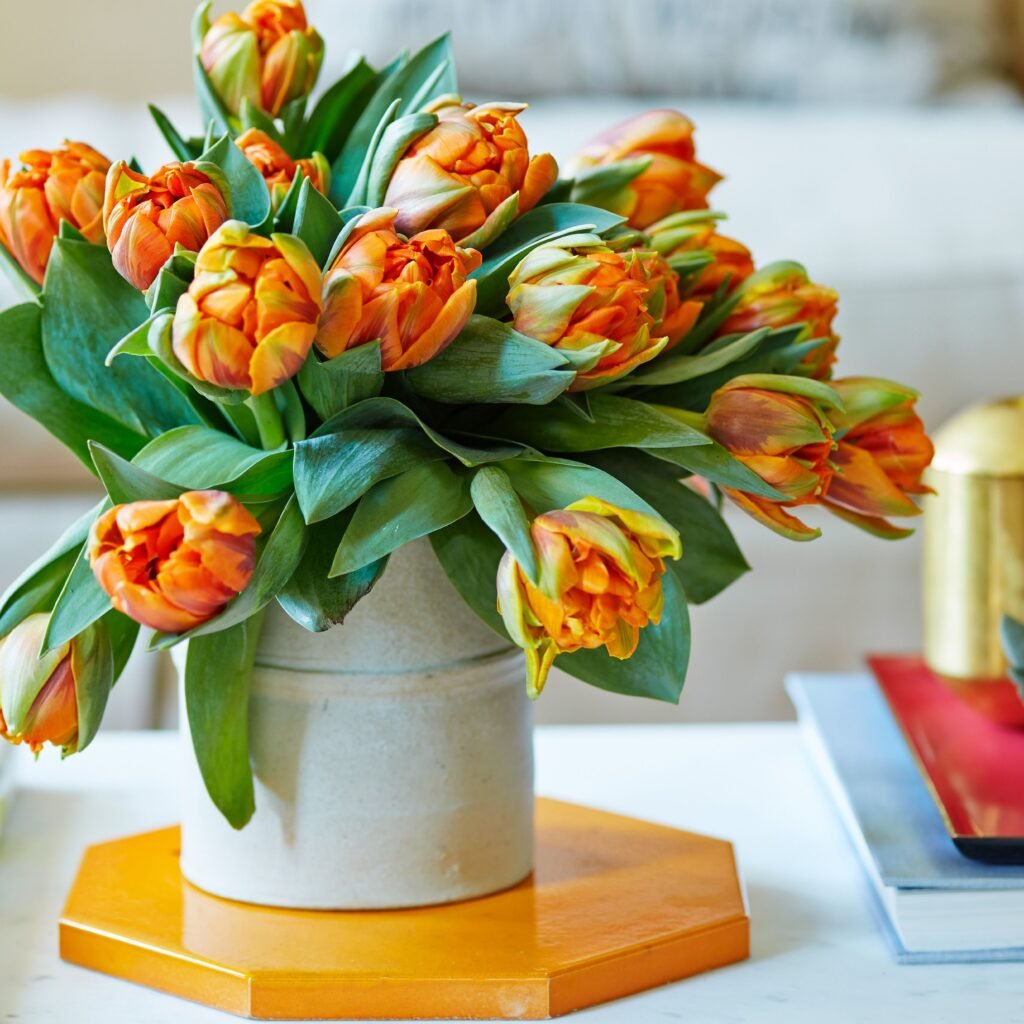
Deadheading encourages energy storage rather than seed production:
- Remove Spent Blooms: Cut flowers just above the base of the stem once petals fade.
- Do Not Disturb Leaves: Leave the stems and leaves intact to continue photosynthesis.
- Seed Prevention: Allowing flowers to go to seed diverts energy from the bulb, reducing next year’s bloom potential.
This step maximizes bulb energy for perennial flowering.
Step 7: Controlling Pests and Diseases
Tulips can be affected by pests and diseases that reduce their lifespan:
- Tulip Fire (Botrytis tulipae): Fungal disease causing brown spots and distorted flowers. Prevent by planting in well-draining soil and removing infected plants.
- Aphids: Can spread viruses; control with insecticidal soap or neem oil.
- Rodents: Squirrels or voles may eat bulbs; protect with wire mesh or plant deterrent species.
- General Hygiene: Remove debris and old foliage to reduce disease risk.
Proactive management protects bulbs for future seasons.
Step 8: Lifting and Storing Bulbs (Optional)
In climates with wet summers or hybrids that struggle to perennialize:
- Lifting: Dig up bulbs after foliage dies back.
- Cleaning: Brush off excess soil; avoid washing bulbs.
- Curing: Store in a dry, cool, well-ventilated place for 2–4 weeks.
- Replanting: Replant in autumn for another season of blooms.
This technique ensures survival and strong flowering in challenging climates.
Step 9: Companion Planting for Tulip Perennials
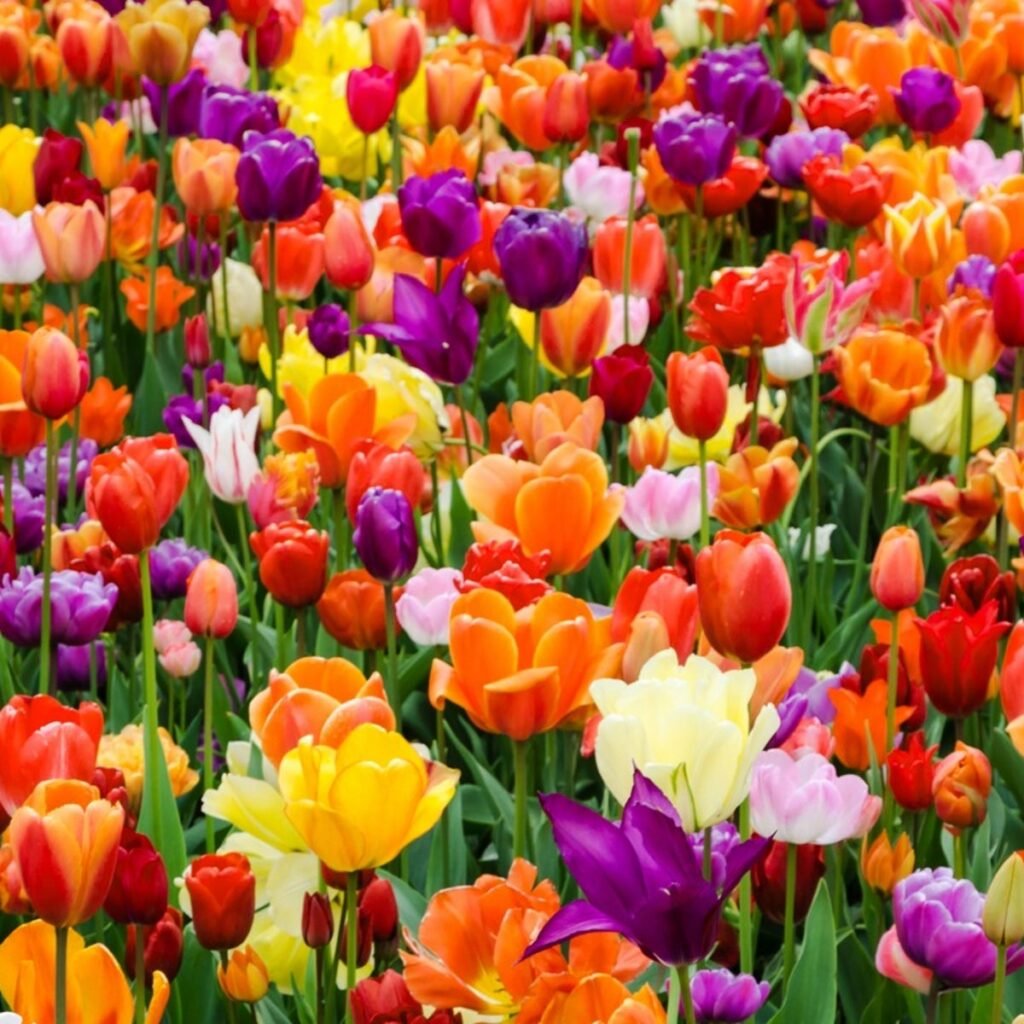
Pair tulips with compatible plants for prolonged garden interest and foliage management:
- Early Bloomers: Pair with crocuses, snowdrops, or hyacinths for a layered spring display.
- Late Foliage Plants: Perennials like hostas, daylilies, or ferns can overtake tulip leaves after yellowing, hiding unsightly foliage.
- Ground Covers: Use low-growing plants like creeping thyme to reduce weed growth and improve soil moisture retention.
Companion planting supports tulip health while enhancing garden aesthetics.
Step 10: Seasonal Tips for Year-Round Tulip Care
- Autumn: Plant bulbs; apply a layer of mulch for frost protection.
- Winter: Minimal maintenance needed; mulch protects bulbs from extreme cold.
- Spring: Fertilize emerging shoots; remove snow or debris gently.
- Late Spring/Early Summer: Deadhead blooms; allow foliage to die back naturally.
- Summer: Optionally lift bulbs in hot or wet climates; otherwise, mulch for soil protection.
Seasonal care ensures a consistent annual display of tulip blooms.
Benefits of Perennial Tulips
- Repeated Blooms: Proper care results in beautiful flowers year after year.
- Low Maintenance: Once established, tulips require minimal attention.
- Versatility: Suitable for borders, beds, containers, and naturalized garden areas.
- Aesthetic Appeal: Bright, colorful blooms create a signature spring display.
- Pollinator-Friendly: Tulip flowers attract early-season pollinators, supporting local biodiversity.
By following these steps, tulips can become a reliable, vibrant feature in your garden every spring.
Conclusion
Keeping tulips blooming year after year requires thoughtful variety selection, proper planting, diligent care, and pest management. Focusing on perennial species, ensuring healthy foliage, deadheading spent blooms, and addressing pests or environmental challenges creates a sustainable tulip garden.
With correct soil preparation, sunlight, watering, fertilization, and seasonal attention, your tulips can thrive as a recurring source of color, beauty, and garden enjoyment. Companion planting, mulching, and optional bulb lifting further enhance your ability to maintain vibrant tulip displays year after year.
By implementing these strategies, gardeners can enjoy the elegance and charm of tulips season after season, transforming their garden into a perennial springtime haven.
